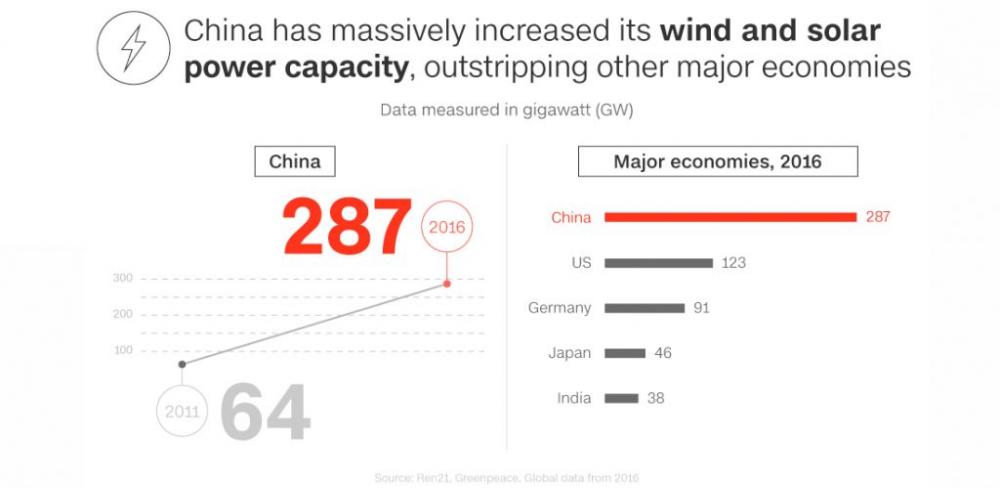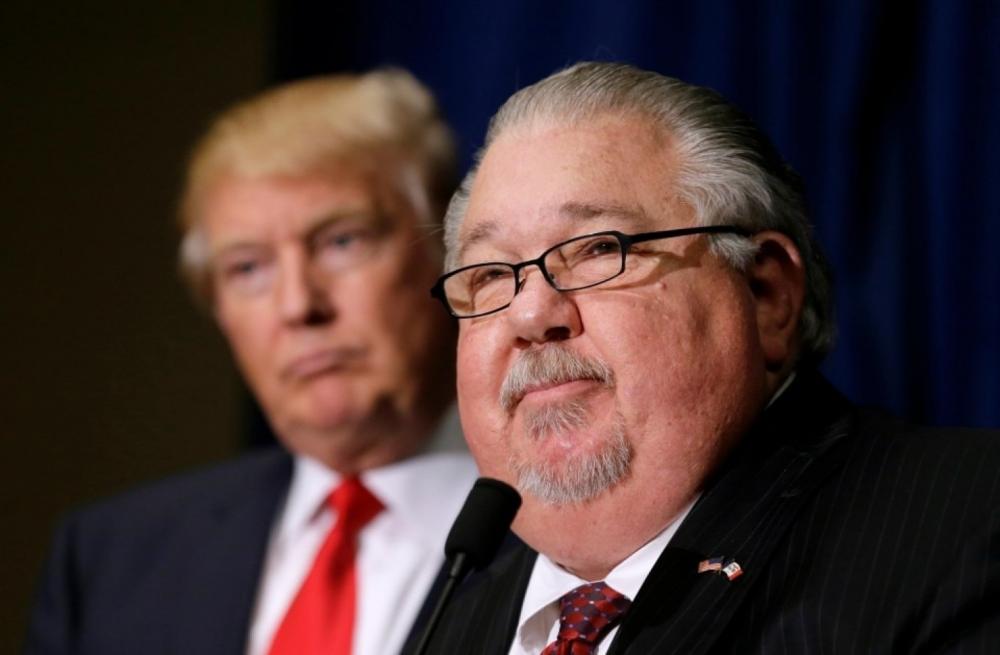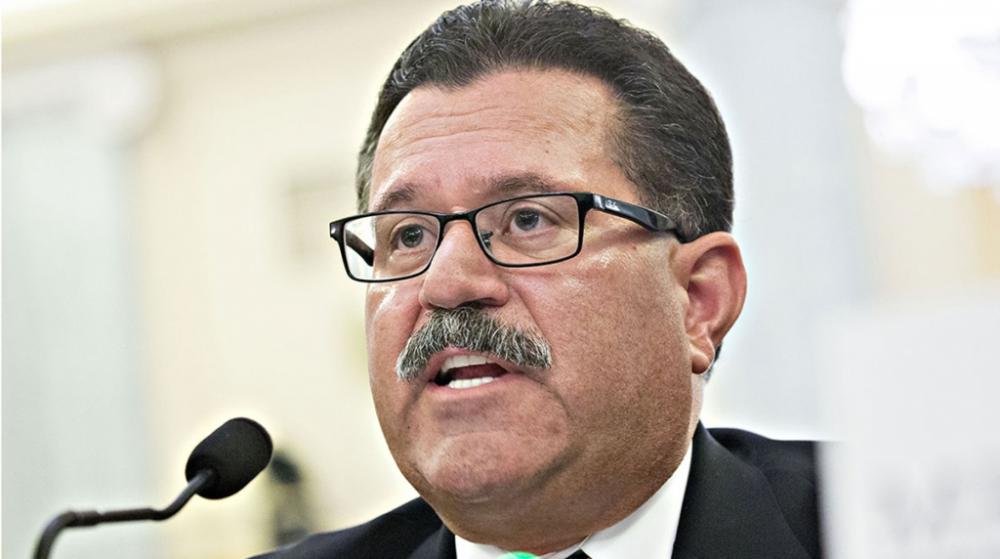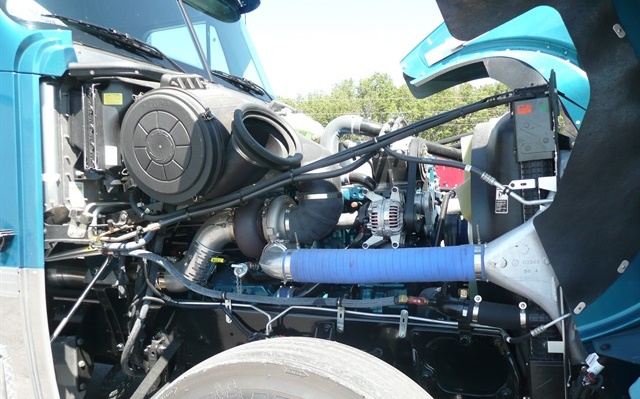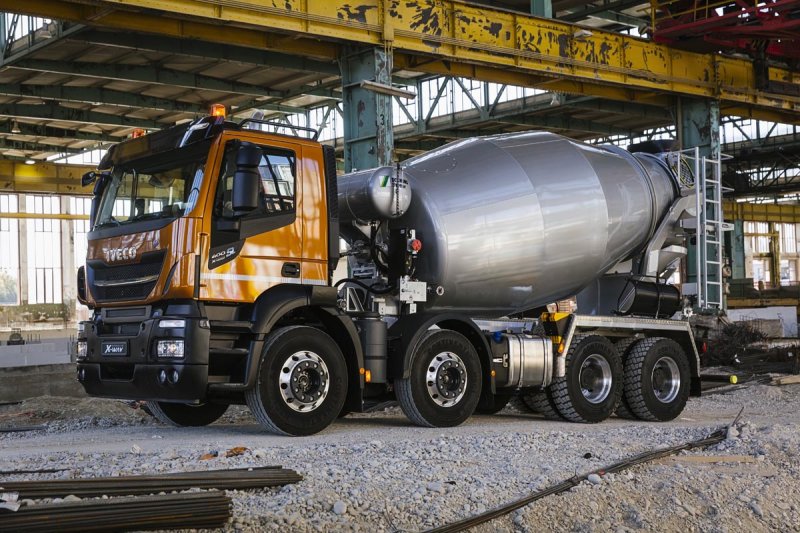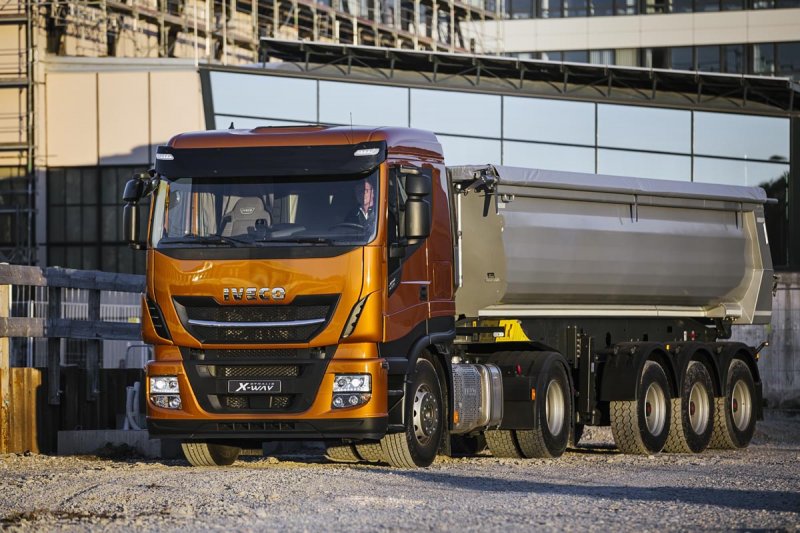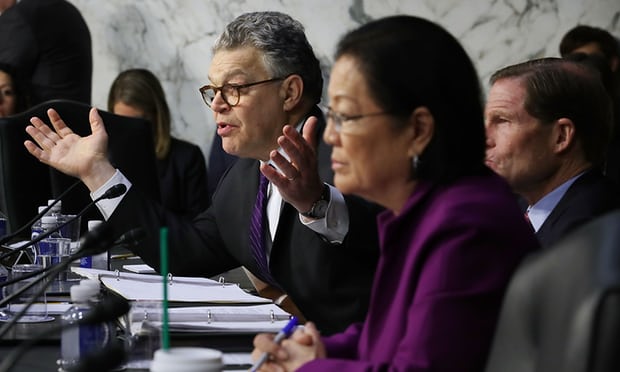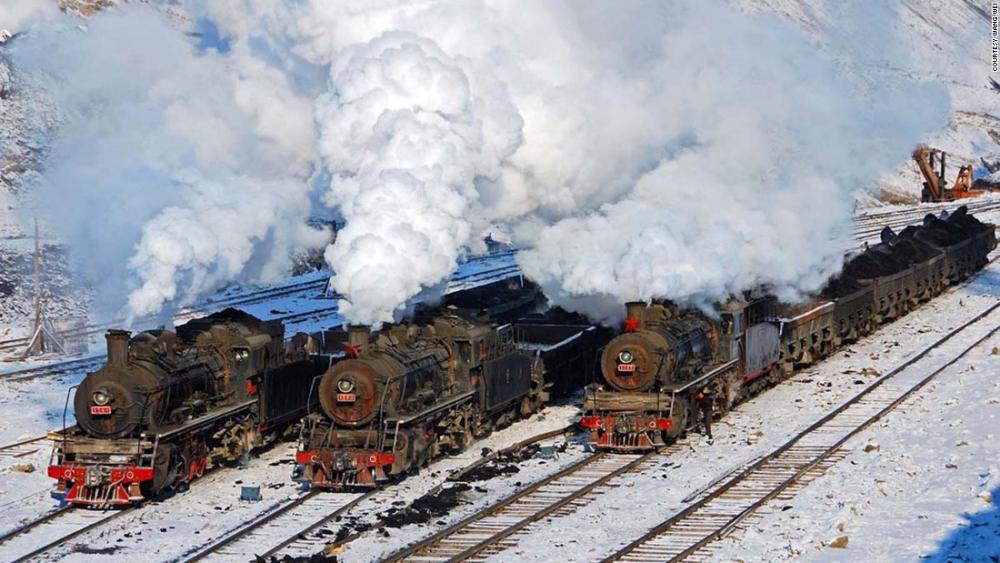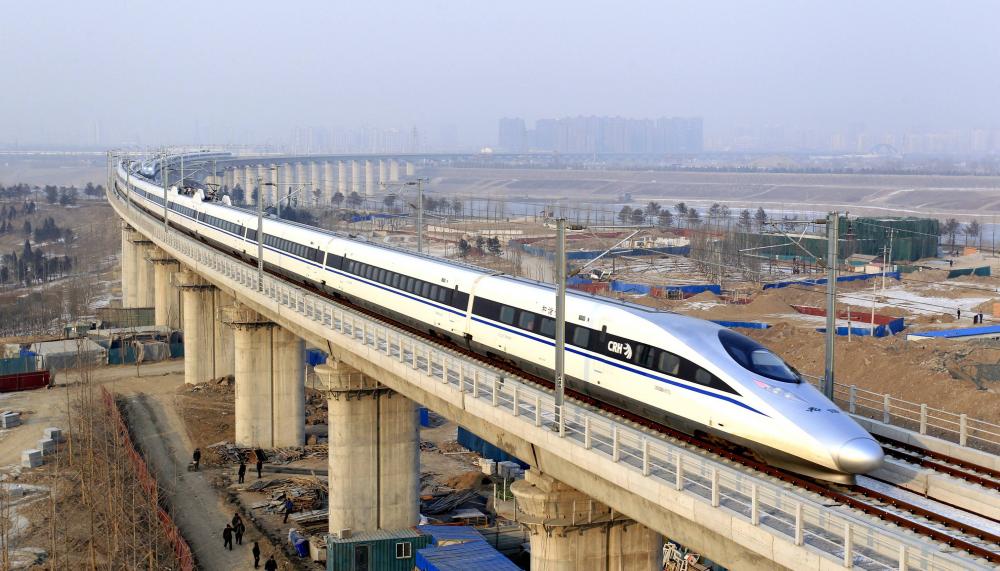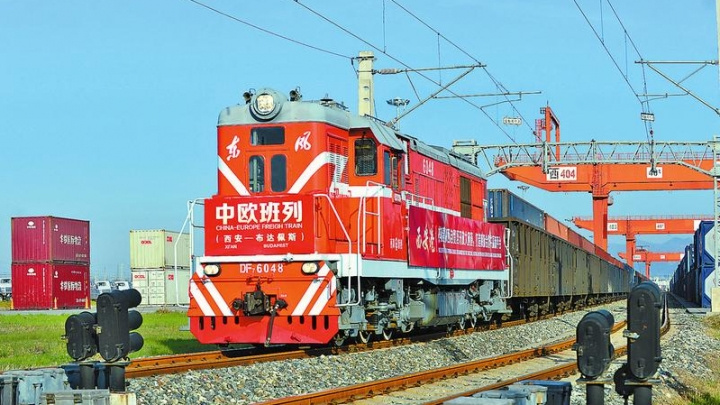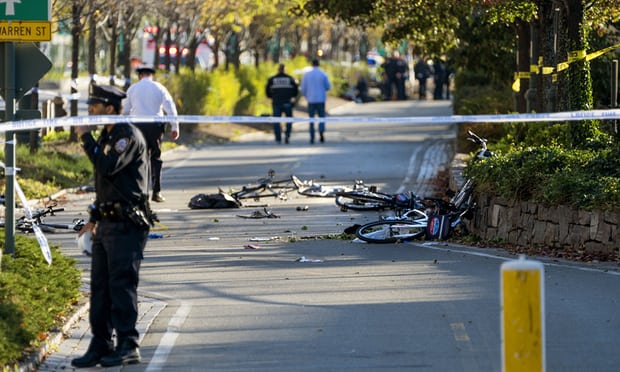
kscarbel2
Moderator-
Posts
18,855 -
Joined
-
Days Won
114
Content Type
Profiles
Forums
Gallery
Events
Blogs
BMT Wiki
Collections
Store
Everything posted by kscarbel2
-
Norfolk Southern Sues Over Millions of Rail Ties It Calls Defective
kscarbel2 replied to kscarbel2's topic in Odds and Ends
I have no problem with a government-owned rail system if it is managed well. AMTRAK never has been. Labor's not cheap there anymore. Those are the old days. They have unions (ACFTU), but they don't hinder. They have more social programs than the US. They have an EPA....The Ministry of Environmental Protection And speaking on renewable energy spending, they want from 64 gigawatts in 2011 to 287 in 2016. -
Let me get this straight. If you've been a radio talk show host, run for office (unsuccessfully) and have degrees in political science and public administration, that equates to being an expert in agriculture and science. And, he said this all with a straight face (that alone confirms he's politician material).
-
Sam Clovis, Trump’s nominee for USDA’s top scientist, confirms he has no hard science credentials Juliet Eilperin, The Washington Post / November 2, 2017 The U.S. Department of Agriculture’s chief scientist nominee, Sam Clovis, who now serves as the agency’s senior White House adviser, confirmed in an Oct. 17 letter obtained by The Washington Post that he has no academic credentials in either science or agriculture. But the former Iowa talk radio host and political science professor contended in the letter to the Senate Agriculture, Nutrition and Forestry Committee’s top Democrat, Debbie Stabenow (Mich.), that his time teaching and running for political office in the Hawkeye State steeped him in the field of agriculture. The post for which President Trump has nominated his campaign co-chair — USDA undersecretary for research, education and economics — has traditionally been held by individuals with advanced degrees in science or medicine. The 2008 farm bill specifies that appointees to the position should be chosen “from among distinguished scientists with specialized training or significant experience in agricultural research, education, and economics,” given that the official is “responsible for the coordination of the research, education, and extension activities of the Department.” Clovis, who possesses a bachelor’s degree in political science, an MBA degree and a doctorate in public administration, repeatedly acknowledged his lack of background in the hard sciences when responding to Stabenow. “Please list all graduate level courses you have taken in natural science,” the second of 10 questions requested. “None,” Clovis replied. “Please list all membership and leadership roles you have held within any agricultural scientific, agricultural education, or agricultural economic organizations,” the third question read. “None,” Clovis replied. “Please describe any awards, designations, or academic recognition you have received specifically related to agricultural science,” the fourth question read. “None,” Clovis replied. Then came the fifth question, which asked, “What specialized training or significant experience, including certifications, do you have in agricultural research?” He answered: “I bring 17 years of agriculture experience integrated into both undergraduate- and graduate-level courses throughout my teaching career as reflected in my curriculum vitae as well as the Committee’s questionnaire.” And having twice run for statewide office, he added that “one cannot be a credible candidate in that state without significant agricultural experience and knowledge.” Clovis, who has said the consensus scientific view that human-generated greenhouse gas emissions have driven recent climate change is “not proven,” has published and taught extensively about homeland security and foreign policy. He lists 17 examples of publications and scholarly activity on those two topics since 1992 on his CV, along with six teaching stints that cover those issues along with business administration. None of those scholarly activities mentions the word “agriculture,” though he identifies “economic impact on agriculture of environmental and conservation public policy programs” among his research interests. He also lists agriculture and rural public policy as a topic on the conservative radio show he hosted from 2010 to 2013 and as one of his areas of interest as Trump’s campaign co-chair. The USDA press office did not respond Wednesday to repeated requests for comment about the nominee’s agricultural experience. Clovis is tentatively slated to have a hearing before the Senate Agriculture Committee on Nov. 9. His confirmation hearing is likely to focus not only on controversial statements he has made in the past, including the suggestion that protecting gay rights could prompt the legalization of pedophilia, but on the revelation this week that he was one of the top officials on the Trump campaign who was aware of efforts by foreign policy adviser George Papadopoulos to broker a relationship between the campaign and Russian officials. Asked about the letter, Stabenow said in a statement that Clovis’s answers show why the Senate should not confirm him as USDA’s chief scientist. “It’s clear from his own words that Sam Clovis does not meet the basic qualifications required for the job,” Stabenow said. “This fact alone should disqualify him, not to mention his long history of politically charged comments and the recent questions surrounding his time as co-chair of the Trump campaign.” .
-
"Mack" by John Montville
kscarbel2 replied to Lmackattack's topic in Antique and Classic Mack Trucks General Discussion
That's the address of the Empire State Building. C'mon Bob, that was on a test last year. The headquarters for Mack moved from the Empire State Building to Plainfield, New Jersey in 1955. Mack had a massive presence in New York, but at one time was a much larger corporate citizen of New Jersey than Pennsylvania. John's good people. He produced some one-off books for me. ----------------------------------------------------------------------------- Mack Plants – New York City, New York The purchase of the Hewitt Motor Company in 1912 by the International Motor Company (the holding company of Mack Brothers Motor Car Company) resulted in the acquisition of Hewitt’s large plant located at West End Avenue and 64th Street in Manhattan. Hewitt trucks and Arco radiators (a subsidiary of the International Motor Company) were produced there, as well as Alco truck spare parts under contract for the American Locomotive Company (which had discontinued truck production in 1913) In 1913, the facility was enlarged to 200,000 square feet, with a garage capacity of 350 trucks, to serve as a factory service center. By 1914, both the corporate headquarters of the International Motor Company and Mack R&D center were located within the massive complex. The facility also acted as a parts distribution center (PDC) until 1920, with the opening of the New Brunswick, New Jersey, PDC. By the early 1930s, the factory service center had fully shifted to Mack’s massive Long Island City location, and the company’s corporate headquarters had moved downtown to the Cunard Building on lower Broadway (before relocating to the Long Island City plant in 1936, the Empire State Building in 1943, Plainfield, New Jersey in 1955, Montvale, New Jersey in 1964 and Allentown, Pennsylvania in 1965). Note: Legendary Mack chief engineer and vice president Alfred Fellows Masury was one of the founders of the Hewitt Motor Company https://www.bigmacktrucks.com/topic/34219-mack-trucks-the-facilities/?tab=comments#comment-226402 -
EPA to rescind glider kit emissions regs enacted last year
kscarbel2 replied to kscarbel2's topic in Trucking News
Being the world's largest market for heavy trucks, I spend considerable time supporting our effort there. One point I'd like to make is that China for some time now is no longer a low cost production location. Wages are quite high nowadays making export prohibitive. Locations like Thailand, Vietnam and India are today's low cost production bases. Production capacity is massive in China, to meet the likewise massive domestic demand in the world's largest commercial truck and light vehicle market. China's heavy truck production plants are state-of-the-art, with assembly lines provided by world leaders like ABB (http://new.abb.com/automotive). They're not piddling with yesterday's diesel engine tooling, rather they're getting our full attention with advanced designs just one step behind the global brands. And they've done this in less than 20 years. I've seen many suppliers exceeding OEM level! If you want low price, you can still find it.....but you get what you pay for. -
The Electronic Logging Device (ELD) Controversy
kscarbel2 replied to kscarbel2's topic in Trucking News
Trump’s Nominee to Lead FMCSA Backs ELD Mandate Transport Topics / October 31, 2017 WASHINGTON — The nominee to become the country’s top trucking regulator said he would review potential hardships an upcoming mandate on electronic logging devices could have on smaller carriers, while ensuring the agency he would oversee would carry out the mandate. “I would look forward to working with industry and all stakeholders: safety, advocates and particularly impacted sectors of commerce,” Ray Martinez, picked by President Donald Trump to lead the Federal Motor Carrier Safety Administration, told the Senate Commerce Committee on Oct. 31. “I’ve heard that this rule could cause serious hardship to some small independent truckers, particularly those working in the agricultural sector. So I’d want to meet with those involved in those areas who oppose the rule to learn more about their concerns,” he added, reaffirming the administration’s position on a mandate that has pitted large carriers in favor of ELDs against smaller trucking operators who oppose the devices. Martinez, who is chief administrator of the New Jersey Motor Vehicle Commission, went on to explain to N.J. Sen. Cory Booker (D) that ELDs are necessary for promoting accurate record-keeping of a trucker’s on-duty hours of service. As he put it, “What we experienced in the past was that it was paper-based, which means it was very susceptible to fraudulent entries.” The mandate was advanced by Congress several years ago. Lawmakers followed up with FMCSA to ensure it would be finalized. The rule requires carriers to equip their trucks with ELDs starting Dec. 18. Regulators have traveled the country to explain the rule to truckers and executives. American Trucking Associations and other industry groups have emphasized they are ready execute the mandate. At his state of the industry address Oct. 23, ATA President Chris Spear said, “This issue has been legislated, promulgated and litigated. And it is now time to move forward.” Opponents continue to press for a delay to the mandate, arguing ELDs would add to costs and violate their privacy. Martinez also told Booker that it was critical for regulators to examine the role fatigue plays in highway crashes. And, he argued data analytics could be a useful tool for enhancing safety. “We have to be a data-driven organization,” he said of FMCSA. “We rely on 13,000 partners in the state level who are also stretched. We have to be focused in our efforts, and we need data to do that; appropriate data to do that.” The agency is adhering to a congressional requirement and updating its Compliance, Safety, Accountability scoring program, a data-centric safety metric for carriers. In written answers to a questionnaire required by the committee, Martinez said he would engage the agency in the integration of self-driving technologies. “FMCSA must ensure appropriate, balanced regulation and seamless integration of any new and developing technologies into the existing highway safety landscape without hindering innovation,” Martinez indicated. The Commerce Committee is expected to vote on Martinez’s nomination before the end of the year. If confirmed, he would succeed acting Administrator Daphne Jefferson. Before leading the N.J. Motor Vehicle Commission, Martinez was commissioner of the New York State Department of Motor Vehicles. Prior to that, he worked on White House advance teams for domestic and international trips for Republican presidents, according to background on the state commission’s website. . -
Transport Topics / November 1, 2017 Truck makers highlighted growing demand for their equipment in third-quarter earnings reports even as they posted mixed results. One saw profitability slip but revenue climb, while two others reported an increase in net income and revenue. Daimler AG said net income fell 17% and revenue rose 6% in the period ended Sept. 30, with sales of 824,100 cars and commercial vehicles — up 9% from a year earlier and a quarterly record for total unit sales. Daimler’s net income equivalent was $2.63 billion, or $2.36 per share, compared with $3.17 billion, or $2.83, in the same year-ago period. Based in Stuttgart, Germany, Daimler reports in euros. Its Mercedes-Benz cars division — its largest business unit — fell 22% following increased expenses for warranties and voluntary services related to diesel engines. Revenue rose 6% to $47.4 billion compared with $44.8 billion a year earlier. Sales of North American trucks in Classes 6-8 rose to 45,300 compared with 31,400 a year earlier — marking its first year-over-year gain since 2015. The North American Free Trade Agreement region is the company’s largest truck sales market. Overall, the truck unit’s earnings before interest and taxes rose to $714 million, compared with $539 million, despite higher costs for raw materials, new technologies and future products. “Daimler Trucks anticipates a significant increase in its total units compared with 2016. We intend to strengthen our strong market position with significantly higher unit sales in the NAFTA region,” Daimler CFO Bodo Uebber said during a recent earnings call with analysts. He did not provide figures. Also, Daimler Trucks North America is testing wireless connected trucks on highways in Oregon and Nevada, and plans to test truck platooning in actual transport conditions in 2018. Meanwhile, Volvo Group reported net income more than doubled and revenue climbed. Its North American brands are Mack Trucks and Volvo Trucks North America. Net income climbed to the equivalent of $658 million, or 32 cents, compared with $311 million, or 15 cents, year-over-year. The Gothenburg, Sweden-based company reports in krona. Revenue rose to $9.2 billion, compared with $8.2 billion a year earlier. In North America, the long-haul and regional-haul segments are rebounding and the construction segment continued to perform well in the quarter. Good economic conditions, increasing freight rates and stabilized used-truck prices contributed to increasing demand. Volvo targeted retail sales in North America to hit 235,000 trucks for 2017, rising in 2018 to about 260,000 trucks. In the quarter, the company’s Class 8 orders in North America jumped to 12,096 compared with 6,764 a year earlier. Within that total, orders for Mack Trucks hit 6,763 compared with 3,903 in the 2016 period. The increase was driven by gains in the construction and highway segments for both brands. The company noted its recent Class 8 product launches mark the biggest upgrade of its North American models in 20 years. Also, Paccar Inc., whose North American brands are Kenworth Truck Co. and Peterbilt Motors Co., reported net income of $402.7 million, or $1.14, compared with $346.2 million, or 98 cents, a year earlier. Revenue rose to $5.06 billion compared with $4.25 billion. Its third-quarter results “reflect a strong European truck market, increased Paccar market share in North America and record global aftermarket parts results,” Paccar CEO Ron Armstrong said in a statement. Parts revenue rose to $840 million compared with $765 million in the 2016 period. The combined Class 8 retail sales market share for Peterbilt and Kenworth in the United States and Canada rose to 30.1% compared to 27.9% in the same period last year. Paccar said Class 8 retail sales for the United States and Canada are expected to be between 210,000 to 220,000 vehicles in 2017, and increase in 2018 to between 220,000 to 250,000 vehicles. Paccar opened its innovation center in Sunnyvale, Calif., during the quarter to coordinate next-generation product development and identify emerging technologies that will benefit future vehicle performance, including autonomous driving and truck platooning, truck connectivity and powertrain electrification.
-
EPA to rescind glider kit emissions regs enacted last year
kscarbel2 replied to kscarbel2's topic in Trucking News
EPA Aiming to Yank Glider Kits from GHG/MPG Rule David Cullen, Heavy Duty Trucking (HDT) / October 31, 2017 The Environmental Protection Agency has begun the formal process to launch a rulemaking that would eliminate provisions affecting glider kits within the Phase 2 Greenhouse Gas Emissions and Fuel Efficiency Standards, which start to take effect in January. The new rules as written call for allowing glider kits only for their original purpose, which was seen as reclaiming powertrains from wrecked trucks and reusing them in new bodies and chassis. This restriction is to become effective in January of 2021. Back on August 17, EPA Administrator Scott Pruitt announced that the agency would address concerns about the GHG Phase 2 rules raised by stakeholders in the trailer and glider industries by initiating “a rulemaking process that incorporates the latest technical data and is wholly consistent with our authority under the Clean Air Act.” As far as trailers go, a court decision has outpaced any reform action by EPA. On Oct. 27, a court granted a motion by the Truck Trailer Manufacturers' Association that sought to stay the trailer provisions of the GHG rule until ongoing litigation regarding the rule ran its course and the agencies that jointly promulgated the rule (EPA and the National Highway Transportation Administration) determined their course of action. That court ruling only pertains to the conflict over trailers, but now EPA has moved forward on its stated intention to strip the glider kit restriction out of the Obama-era GHG rule by initiating a highly targeted rulemaking. According to the White House Office of Management and Budget, on Oct. 20 it received the proposed rule to repeal the glider , RIN #2060-AT79, titled “Repeal of Emission Requirements for Glider Vehicles, Glider Engines, and Glider Kits.” However, the OMB website indicates that the rule’s text cannot be viewed as it “has not been published in a Unified Agenda” yet. Though glider kits account for a small percentage of total new truck sales, the older-model diesel engines they are powered by produce far more exhaust emissions than current engines, contended EPA during the Obama administration. At the time, the agency had become concerned at a surge in sales, from a few hundred per year 10 to 20 years ago to more than 20,000 in 2015. Most of those were highway tractors, and were undisguised efforts to get around modern emissions limits and the expensive engines needed to meet them, the agency claimed. As currently written, the glider kit restrictions will phase out gliders over the next four years. Beginning this January, volume production and sales of gliders using “pre-emission” diesels will be greatly curtailed. But low-volume builders, including individual truckers, may continue to buy and assemble glider kits using older engines until 2021. For major truck makers, the battle over glider kits may amount to fighting the last war and therefore it is a conflict they may well prefer to sit out. Consider what Daimler Trucks North America President and CEO Roger Nielsen told HDT recently about glider kits. “Regardless of what happens with the glider rule, we’re going to keep to the [Phase 2] rules we agreed to. We have moved on, so in our business plans, we took it as certain that this would happen. That phase-out of gliders, that’s our course. Nielsen added that “it’s interesting to watch the discussion,” noting that there are “not too many left providing gliders. There are certainly cases where customers need remanufactured engines to help replace wrecks, but the direction we are taking, and [at this point] still is the rule, that’s the path we’re going to take." . -
Discover Renault Trucks T for long haul transport
kscarbel2 replied to kscarbel2's topic in Trucking News
Absolutely superb videos. Job well done. -
Discover Renault Trucks T for long haul transport
kscarbel2 replied to kscarbel2's topic in Trucking News
-
Renault Trucks Press Release / October 25, 2017 Renault Trucks T works in extreme winter conditions as shown here operated by Dom Trans in Poland. .
-
Iveco Trucks Press Release / October 27, 2017 New Stralis X-WAY combines the legendary Trakker chassis and off-road capability with the best-in-class payload, ultimate on-road performance and fuel efficiency. The Stralis X-WAY is IVECO’s completely new range specifically developed for vocational and construction logistics missions, which provides the PERFECT CROSSING for on-road applications requiring off-road mobility. The Stralis X-WAY delivers outstanding TCO with the best of IVECO’s fuel efficiency and on-road technologies, including its patented Hi-SCR technology that requires no parked regeneration. The Stralis X-WAY breaks new ground with the exceptionally low kerb weight of the Super Loader version, tested by UTAC at just 8,845 kg, which delivers the highest payload in its segment. It can carry 355 kg more load than the best vehicle certified by UTAC, resulting in a financial benefit of up to 23,500 € a year. Record modularity and mission-oriented design deliver a vast line up and the ability for customers to tailor the vehicle to their specific needs with no compromise. The Stralis X-WAY NP, powered by IVECO’s industry leading natural gas technology, offers a further environmental advantage combined with the payload and performance benefits of the range – a benefit for construction logistics operations in urban centres with restrictions on diesel vehicles and job sites operating 24/7 with noise constraints. IVECO launched the Stralis X-WAY, the entirely new range specifically designed for construction logistics and urban missions. It combines IVECO’s best fuel-efficiency and safety technologies with the legendary off-road robustness of its toughest vehicles to deliver high productivity with outstanding Total Cost of Ownership. The Stralis X-WAY raises the stakes in construction logistics and urban services missions with the biggest payload in its segment: its Super Loader version on an 8x4 chassis developed for concrete mixer applications weights in at less than 8,845 kg, taking the customers’ payload to new heights. The new range takes the modular approach to the extreme, offering a choice of line-ups that can be tailored to match the exact requirements of every mission with no compromise. This is a key asset in a highly vocational sector where transformation is the rule rather than the exception, and where requirements vary from country to country: with its extreme flexibility the Stralis X-WAY is able to provide the perfect answer to a vast range of very different missions – from light tipper to concrete mixer. Pierre Lahutte, IVECO Brand President, stated: “The Stralis X-WAY is the perfect truck for customers operating in the construction logistics and urban services sector. It stands out on the market for being designed specifically for this sector, with record modularity that enables us to match each customer’s mission exactly, without compromise. The exceptional payload of the Super Loader version is testament to this vehicle’s ability to meet the specific requirements of every application. This ultimate flexibility comes with the outstanding TCO that results from the cutting edge technology we introduced in our TCO2 Champion, the STRALIS XP, plus winning features such as our Hi-Traction system for off-road capability.” THE BEST PAYLOAD IN THE INDUSTRY: TESTED KERB WEIGHT OF 8,845 KG Weight sensitive missions such as concrete mixers, where the customer’s profitability depends on the payload the truck is able to carry, kerb weight is of paramount importance. The Stralis X-WAY raises the stakes with its Super Loader version developed specifically for concrete mixer applications, which delivers the best payload in the industry. It was tested by independent certification body UTAC on an 8x4 chassis in running conditions and pulled by best-in-class 9-litre 400 hp engines, and its kerb weight was measured at 8,845 kg. This best-in-class kerb weight was achieved through a number of design choices such as the redesign of the mechanical rear suspension, the chassis architecture and cross members optimisation, and the 400 hp IVECO Cursor 9 engine, new front ‘1-leaf’ and rear ‘2-leaf’ springs, 800-Nm PTO without clutch and optional aluminium rims and air tanks. The result is a robust vehicle our customers can rely on to deal with the driving conditions on a construction site while carrying the biggest payload in the construction logistics and urban services segment, then go on to deliver excellent fuel-efficiency, safety and comfort on the road. OUTSTANDING TCO: IVECO’S MOST ADVANCED TECHNOLOGIES FOR EFFICIENCY AND PERFORMANCE The Stralis X-WAY integrates IVECO’s most advanced features for on-road missions and the proven fuel reduction technologies that have been shown to reduce fuel consumption by 11.2% in the Stralis XP, as validated by leading technical service organisation TÜV SÜD. The completely redesigned driveline has taken performance and fuel efficiency to a new level. The patented Hi-SCR after-treatment system achieves a 97% NOx-abatement level – the highest in the market – and requires no parked regeneration, reducing maintenance costs and maximising the vehicle’s time on the road. The best-in-class Hi-Tronix automated transmission is available in 12- and 16-speed versions. The HI-MUX electrical and electronic architecture enables all the fuel saving and safety functions. These include the state-of-the-art HI-CRUISE system that integrates driving assistance functions such as eco-roll, predictive gear shifting and predictive cruise control. Also included are the Smart Auxiliaries that minimise fuel usage in every situation. Other features, such as the disc brakes further contribute to lowering the TCO. A MISSION-ORIENTED OFFER: MULTIPLE SET-UPS AND MODULAR APPROACH DELIVER ULTIMATE FLEXIBILITY The extensive line-up with 2- and 4-axle models and an 8x4 tridem; artics and rigid; a wide offer of engine, gearbox and Multipower PTOs, including the new sandwich PTO with up to 2,450Nm torque; three engines (Cursor 9, Cursor 11, which is new on the 6x4 and 8x4 versions, and Cursor 13) and three transmissions (manual, Allison automatic and ZF Hi-Tronix 12- or 16-speed automated) offers a wide variety of possibilities. The Stralis X-WAY is available in three vehicle set-ups to match every customer need, depending on the amount of off-road that will be required of the vehicle: the On set up features all the Stralis on-road characteristics of best visibility and cab access, now available also on multi-axle versions; the Off set up matches all the high mobility performances needed to fully comply with off-road homologation. On+ is the intermediate set up for customers who require the most favourable mix of On- and Off-road operation. STRENGTH AND GRIP FOR OFF-ROAD LAST MILE: LEGENDARY ROBUST CHASSIS AND HI-TRACTION The Stralis X-WAY combines its advanced on-road technologies with the legendary chassis of IVECO’s off-road vehicles, which have become a benchmark for robustness in the industry. It tackles with ease the off-road sections of its missions with features such as the new HI-TRACTION hydrostatic drive that provides additional hydraulic front-wheel traction when needed, improving the vehicle’s stability and the driver’s safety on difficult terrains. THE SUPERIOR COMFORT OF THE BEST LONG-DISTANCE ON-ROAD VEHICLES The Stralis X-WAY’s modular approach extends to the cab, so that customers can choose the one that best matches their mission and the time that will be spent on the road: the AD (Active Day) short cab with low roof, AT (Active Time) sleeper cab with low or medium roof, and for ultimate comfort, the Hi-Way sleeper cab that won the Truck of the Year 2013 award and was designed around the driver for on-road long-haul missions. Drivers will be just as comfortable and safe on the longer on-road sections of their missions and on the shorter off-road drives when collecting or delivering a load on a jobsite. MICHELIN X® WORKS™ TYRES OFFER A LOW ROLLING RESISTANCE AND THEREFORE POTENTIAL FUEL SAVINGS FOR DELIVERIES ON CONSTRUCTION SITES The new Stralis X-WAY is available with the MICHELIN X® WORKS™ tyres, developed for deliveries on construction sites. The tyre sizes 315/80 R 22.5 and 13 R 22.5 for steer and drive axles are low rolling resistance tyres (ECE/R117 labeling C for rolling resistance). The MICHELIN X® WORKS™ tyres enable transport operators to reduce fuel consumption compared to the previous MICHELIN X® WORKS™ XZY (ECE/R117 labeling D for rolling resistance) with no compromise on other aspects of their performance, such as durability, safety and retreading capability. BRAND NEW MICHELIN X® MULTI™ ENERGY™ TYRES OFFER THE LOWEST FUEL CONSUMPTION AND CO2 EMISSIONS IN THE MARKET Starting from the first quarter of 2018, new Stralis X-WAY will be available with the brand new MICHELIN X® MULTI™ ENERGY™ tyres, developed for transport operators covering a variety of missions. The new tyres offer the lowest fuel consumption and CO2 emissions in the market1 with no compromise on other aspects of their performance, such as durability, safety, as well as regrooving and retreading capability. The MICHELIN X® MULTI™ ENERGY™ tyres enables transport operators to reduce fuel consumption by 0.9 litres / 100 km and CO2 emissions by 2.4 tons every 100,000 km compared to the MICHELIN X MULTIWAY 3D. 1 Rolling resistance test (European Labelling – EU Regulation Grading R15) conducted on size 315/70R22.5 on MICHELIN X® MULTI™ ENERGY™ Z and MICHELIN X® MULTI™ ENERGY™ D compared to the main competitors on the market. . .
-
Defense Update / October 31, 2017 In the 1960s the M-60 series Patton tank was the main battle tank (MBT) of the US Army and Marine Corps. Mounting the powerful M68 105mm gun, and protected with heavier steel armor, in the 1960s the M-60 represented the most advanced tank of its generation, a combat vehicle that could face the most sophisticated Soviet tank of its time – T-55. In all, over 15,000 tanks of these models were built and supplied to 24 countries in addition to the U.S. Today, almost half that number are still operational, particularly with third world countries. While the M-60 was tested in battle since 1973, it was used in combat mainly by the Israelis, and, therefore, the combat lessons learned about its vulnerabilities and advantages were not disseminated to Arab M-60 operators. The largest fleets of M-60 are in Egypt, and Saudi Arabia, where the M-60 is used alongside the M-1A1. these tanks are maintained in the original configuration, as they were produced in the 1970s. In the recent years, these old warhorses are heavily used in combat operations, in Yemen and Sinai, where they face irregular but heavily equipped opposition (Iranian equipped Houthis in Yemen, ISIS in Sinai), where they displayed questionable performance. Both Egypt and Saudi Arabia have suffered significant losses to anti-tank weapons (RPGs, ATGM etc). Turkey has also operated M-60, part of these were modernized M-60T that received major Israeli designed upgrades. These tanks have seen extensive combat service in the Syrian front recently, and seem to have fared much better than the Turkish Leopard 2A4 tanks. These 170 tanks were the first batch of upgraded M-60T tanks. An option for the supply of a second batch, that would have received much-improved armor and active protection and enhanced fire controls were not exercised by the Turks as diplomatic relations between Ankara and Jerusalem drifted apart. However, the modernization package developed by IMI for the M-60 is still available, as a whole or parts, to support other M-60 operators. Other operators of the type include Greece, Taiwan, Thailand, Jordan, Morocco, Oman, Brazil and Bahrain, the later consider upgrading its fleet of 180 such tanks. Iran also maintains a fleet of about 150 of these tanks, some are cannibalized with Russian parts into Zulfikar, locally built tank based on the M60 drivetrain and suspension mated with a new turret mounting the Russian 2A46 125mm gun. Both M-60 and its archrival, the Russian T-55 are considered obsolete but both are still used by many armed forces. While the M-60 continue to serve and fight, the tank must be modernized if to survive and continue to be in service. Among the upgrades recommended for the M-60 series (both A1 and A3) are enhancements in firepower, mobility, and survivability, plus the introduction of life support systems that are needed, particularly in the hot climate of the Middle East. As one of the largest operators of the M-60 at the time, Israel’s Defense Force (IDF) designed and continuously upgraded hundreds of its M60s into “Magach Model 7”, and some Model 8 variants, improving survivability by replacing the original hydraulic turret traverse and gun laying systems with electrical drives, as the hydraulic fluid used in the original systems was highly flammable, and often caused catastrophic fires when the tanks were hit. Although the IDF did not replace the 105mm main gun, improved fire control systems introduced enabled the IDF veteran gunners to score excellent hits at very long gunnery range, often defeating the younger crews that operated modern tanks. While the IDF retired its M60s, other operators in the Middle East still use the tanks, and many are implementing similar upgrades to their fleets. In 2002 Turkey adopted the Israeli Magach design, fielding the M-60T designed by IMI Israel. In recent years these tanks were used extensively in combat operations in Syria. In this model, the 105mm cannon was replaced with IMI’s MG251 120/44mm gun. This gun was specially designed to replace 105mm cannons and, therefore, is equipped with recoil mechanism that reduces the loads transferred to the turret. However, all these additions increase weight and the M-60T gained over 12 tons, necessitated the use of a more powerful 1,000 hp MTU engine and the associated RENK transmission. The growing conflicts in the Middle East and the wide availability of M-60 type tanks (both A1 and A3) by military forces in the region attracts integrators like Raytheon, L-3 and most recently the Italian group of Leonardo to offer modernization packages for the tank providing military forces in Egypt, Saudi Arabia, Bahrain and Jordan with affordable solutions to bring more of their tanks to par with modern threats. Such upgrades address the original tank’s known vulnerabilities (armor and hydraulics), replacement of aging turret, gun and fire controls, and provisions of modern night vision optronics for the driver and tank commander. In 2016 Raytheon introduced its own life extension program (SLEP) package for the M-60A3, that is offered for about a third of the price of a new tank. L-3, the producer of the Patton’s powerpack also offers an upgrade to Raytheon’s SLEP, under the ‘Destroyer’ brand. The Destroyer uses L3’s 1200hp diesel variant of the AVDS-1790, supporting all the tank’s current power needs and growth, including air conditioning and exportable electrical power. This package swaps the 105 gun with a 120mm, uprated the 750 hp AVDS-1790 engine to a 950hp level and introduce electrical turret drives and modern fire control enabling the crew to fire on the move. The driver’s night viewer used in the prototype offers the driver a panoramic view, which is part of the tank’s 360 viewing system, improving driving autonomy, safety, and security. One of the important additions was the use of Curtiss-Wright’s Electric Gun Turret Drive Upgrade Kit. This fully electro-mechanical system replaces the older, less accurate hydraulic and hybrid-based turret stabilization systems. The new turret drive and stabilization system delivers finer control and significantly improved reliability, acceleration, and audio noise reduction by replacing the hydraulic lines with electrical, digitally-controlled electric actuators. This allows the tank turret to rotate faster and accurately fire while the tank is on the move and is also lighter and safer, as a result of the removal of flammable hydraulic fluids in the turret. Back in the early 2000s General Dynamics Land Systems (GDLS) offered a comprehensive upgrade package for the M-60, based on an M-60/M-1 hybrid dubbed M-60/2000. This version competed for the M-60T program in Turkey, where they lost to IMI. A proposal for an upgrade was also discussed with Egypt but didn’t come through. Last week another player stepped into this market – The Italian Leonardo group unveiled its own upgrade for the M-60A3 in Bahrain, at the local, international defense exhibition (BIDEC). Leonardo’s modular solution integrates a 120/45 mm low-recoil force main gun, the same weapon used on the new Centauro II wheeled armored vehicle. According to the company, most of the subsystems included in the upgrade, including the Fire Control System (FCS), night vision and 120mm main gun are designed and manufactured by the group, as are the systems for improving turret performance. The 120/45 mm gun is a low recoil variant of the smooth bore 120mm, it fires the same rounds but offers the advantage of reduced weight and low recoil force that reduces the structural stress on the hull and, therefore, eliminates integration risks with heritage platforms. The system uses a hydraulic, recoil-counter-recoil mechanism with multi-baffle, high-efficiency muzzle brake to minimize the recoil force and prevent any excessive stress on the turret structure. The fire control system, which integrates day and night optronics, together with a high level of ballistic protection and modern onboard equipment, increases the probability of detecting potential threats, and neutralizing them during a full day and night operations. A new feature included in the tank displayed in Bahrain was the Hitrole remotely controlled weapon system, that enables 360° panoramic surveillance from a secure position inside the tank. This system replaces the traditional HMG mount that is manually operated by the tank commander, adding a complete Fire Control System (FCS) solution consists of a modular sighting system including a Day TV camera, an Infra Red (IR) camera for night vision and an eye-safe Laser Range Finder (LRF). Leonardo’s proposal also includes the upgrading of the power pack, by uprating the engine to increase available power by 20%, thus achieving improved power-to-weight ratio despite the weight increase, without the replacement of the main engine. Increased armor protection with STANAG 4569 Level 6 protection plates to the frontal arc and side skirts and slat armor added to the bustle, protecting the rear of the turret from RPG attack. The installation of an Automatic Fire and Explosion Sensing and Suppressing system (AFSS) that improves soldier survivability and protects the engine compartment from taking fire. After a promising entry to the M-60 upgrading market in the 2000s, Israel’s role in this market diminished, as bilateral relations between Israel and Turkey deteriorated and, since the majority of M-60 operators are in markets inaccessible by Israel’s defense industries. However, many subsystems developed by Israeli companies, including armor protection, fire controls, night vision systems, threat warning systems, engine upgrades etc., are available for such programs. .
-
- 1
-

-
Sale of Renault Trucks Defense comes to ‘definitive halt’ ... for now Defense News / October 31, 2017 PARIS ― The idea of selling Renault Trucks Defense could be dead in the water, however some wonder whether a French Army competition for a light multirole reconnaissance vehicle could resurrect the move. There’s a school of thought that the sale of RTD ― a subsidiary of Swedish truck-maker Volvo ― is simply postponed rather than canceled. And according to three defense executives, the tender for the Army vehicle, dubbed Light VBMR, is key to the future of RTD. Winning a contract worth hundreds of millions of euros would boost the value of the company and bring back the sale of Volvo’s military business, Volvo Group Governmental Sales, the sources said. “Light VBMR is a determining factor,” an executive said. RTD is the major part of the government sales unit. That expectation of a sale clashes with remarks by Joël Barre, the head of France’s Direction Générale de l’Armement procurement office, or DGA, who said Oct. 18 that Volvo would not put the subsidiary back on the market. “Concerning RTD, there will not be a sale,” Barre told the defense committee of the lower house National Assembly, an official record of the meeting showed. Barre told legislators he had seen Jan Gurander the day before and asked the Volvo deputy CEO and chief financial officer whether there had been a cancellation or a postponement of a few months. “He guaranteed that there is a definitive halt on a sale, assuring me that he would give RTD the resources to develop itself,” he said, adding that the DGA would keep a careful eye on these “verbal commitments.” RTD chairman Emmanuel Larcher — who accompanied Gurander — backed up the remarks of the Volvo senior executive, Barre said. ‘They have to sell it‘ Industry executives, however, expect a sale of RTD, in part because the company is seen as a strong candidate in the competition for the Light VBMR. There is a view that both the previous bidders, CMI and KNDS, had factored in RTD winning the Light VBMR contract in their valuations, a source said. So even if RTD were to win the deal, the prospective bids would not rise. Volvo called off the sale of the VGGS division last month after a competition — which ran almost a year — failed to attract bids as high as the Swedish company and its bank adviser, Rothschild, expected. According to the three executives who spoke to Defense News, among the bidders for the light vehicle contract are Engie Ineo, teamed with Austrian partner Achleitner; KNDS; RTD; Soframe; and Thales. A selection in the tender for the light vehicle is expected by the end of the year or early next year, an executive said. The best and final offers have been handed in and are being assessed. A DGA spokesman confirmed the competition has been launched and is underway. No further details were available. One view is that by winning the light vehicle contract, RTD would boost prospective bids by €200 million to €300 million (U.S. $233 million to $349 million) in a renewed sale of VGGS. RTD has a strong position as major supplier of light vehicles to the French Army, but there seems to be uncertainty over its future in the wake of Volvo’s attempt to sell the unit. The Volvo governmental sales unit includes Acmat, Mack and Panhard alongside RTD. “They have to sell it,” a source said. The core business of Volvo is commercial trucks, while VGGS accounts for only 1.5 percent of group sales. In the tender for the light vehicle, Thales was expected to offer its Australian Bushmaster vehicle, which could be assembled under license in France with an industrial partner. The electronics company displayed a Bushmaster at the trade show Forum Entreprise Defense, held Oct. 18-19 at Versailles, just outside the capital, an executive said. Equipment service was the theme of the show. RTD was expected to offer its Sherpa or Bastion vehicles, while KNDS could pitch a Krauss-Maffei Wegmann four-wheel drive vehicle, which equips German and Polish special forces. The light multirole vehicle is part of the French Army’s Scorpion modernization program, with a first delivery due in 2021. The Army expects an increased order of 558 light vehicles, compared to a previous target of 358 units, the service website shows. That revised number reflects the government’s 2016 decision to boost the strength of the Army in an anti-terrorist drive. The DGA confirmed the higher order. A first batch of 400 units is due by 2025 under the first phase of Scorpion, with the balance of orders expected in the second phase. The Army requirement is for a 10-ton, four-wheel drive vehicle to equip command, brigade, intelligence and electronic warfare units. The vehicle will be equipped with a standard information and command network, software-defined radio, and electronics, and it will be armed with a remote-controlled 12.7mm or 7.62mm machine gun. The Light VBMR vehicle will replace the Véhicule Blindé Léger scout car. Volvo said Oct. 17 the company would “discontinue” the sale of its government sales unit as offers had been too low, and that the group would continue with the operation. CMI and KNDS had filed rival bids of about €400 million for VGGS, which Volvo and Rothschilds considered too low in view of expectations of offers of €500 million to €700 million. CMI is a Belgian firm that build guns and turrets for armored vehicles. KNDS is a joint venture between Krauss-Maffei Wegmann and Nexter.
-
"People should and do trust me" - Hillary Clinton
kscarbel2 replied to kscarbel2's topic in Odds and Ends
It all begs the question, if half of what the news tells us about Clinton and Trump is true, then how could they possibly be allowed to run for the office of president? -
C'mon David, what's the matter with you. History 101.....When we interfere in the elections and internal affairs of countries around the world, it's all well and good. But when they interfere, it's very, very bad.
-
The Advertising for Immigrants Show Newsweek & ABC News New York / October 31, 2017 Sayfullo Saipov, a 29-year-old Uzbekistan native, was awarded a permanent resident visa in 2010 under the Diversity Immigrant Program (aka. Green Card Lottery). The [taxpayer funded] program is meant to increase the number of immigrants from countries with low rates of U.S. immigration [Why???]. The program awards 55,000 green cards a year, a majority of which go to people in African and Eastern European nations, according to U.S. Citizenship and Immigration Services. To qualify, applicants must prove that they have a clean criminal record [impossible to verify], have a high school diploma or its equivalent, or have at least two years of work experience within the past five years. It takes two years of vetting to get a visa [Breaking News - Vetting failed]. The Immigration Act of 1990, also known as the Schumer program, after its sponsor Chuck Schumer (D-NY), established the current and permanent Diversity Visa program. Congress has tried to end the Diversity Visa lottery program five times since 2007. The program's future most recently came into question when the Reforming American Immigration for a Strong Economy (RAISE) Act, sponsored by Senator Tom Cotton (R-Ark.), called for its elimination as part of a wider reduction in legal immigration. In its statement supporting the bill, the White House called the Diversity Visa lottery program “outdated,” adding that it “serves questionable economic and humanitarian interests.” Saipov applied for the program in 2008 and was granted a Diversity Visa two years later. According to government records, there were 153,661 applicants for a DV-10 visa from Uzbekistan in fiscal year 2008. In 2010, 3,356 Uzbeks received a visa, meaning Saipov had a 2.1 percent chance of succeeding. From its independence from the Soviet Union in 1991 until last year, Uzbekistan was ruled by Islam Abduganiyevich Karimov, whose authoritarian rule pushed many of its residents to emigrate. ISIS also has a presence in Uzbekistan and recruits militants from there.
-
"People should and do trust me" - Hillary Clinton
kscarbel2 replied to kscarbel2's topic in Odds and Ends
Clinton’s link to Putin is the underreported ‘dossier’ bombshell Marc A. Thiessen, The Washington Post / October 31, 2017 The news that the Clinton campaign and the Democratic National Committee paid for research used in the discredited Trump-Russia “dossier” is a bombshell. But even more shocking — and overlooked — is the revelation that the firm the Clinton campaign hired to compile that dossier, Fusion GPS, is the same firm that has been accused in recent congressional testimony of launching a smear campaign in Washington against Sergei Magnitsky, the Russian lawyer who was tortured and killed in a Russian prison in 2009 after uncovering a $230 million tax theft by 23 Kremlin-linked companies and individuals close to President Vladimir Putin. Which raises the question no one seems to be asking: Why was Hillary Clinton using an opposition research company with Putin-linked clients to dig up dirt on Donald Trump? The claimed link that was identified in congressional testimony has its roots in the Putin regime’s lobbying for the repeal of the 2012 Sergei Magnitsky Rule of Law Accountability Act, which froze assets and banned visas for Russians involved in or benefiting from Magnitsky’s murder, as well as for others involved in torture, extrajudicial killings or abuses against those seeking to promote human rights or expose illegal activity by Russian officials. So far, some 35 Putin cronies have been sanctioned under the act, infuriating the Russian president. After the act passed, prominent Magnitsky supporters in Russia began to be mysteriously poisoned, thrown off buildings or shot on bridges in front of the Kremlin. At the same time — according to testimony by Magnitsky’s boss, Hermitage Capital Management chief executive William Browder, recently made to the Senate Judiciary Committee — Fusion GPS launched a lobbying campaign in Washington to repeal the Magnitsky Act by charging (a) that Magnitsky was not murdered and (b) that he and Browder were, in fact, the ones responsible for the tax fraud. Of course, Magnitsky was blameless, and Browder’s only crime was that he virtually single-handedly led the charge for passage of the Magnitsky Act — originally opposed by the Obama administration, including Clinton’s State Department. One of the faces of the campaign to repeal the Magnitsky Act was the Russian lawyer Natalia Veselnitskaya (the same lawyer who famously met with Donald Trump Jr. in 2016). She visited the United States in 2016 ostensibly to lobby on adoption issues (Putin had barred Americans from adopting Russian children in response to the passage of the Magnitsky Act), but her real purpose was to push the repeal of the act and prevent the passage of a global law bearing Magnitsky’s name. Concurrently, Veselnitskaya defended Prevezon, a company sanctioned under the Magnitsky Act for laundering money from the tax fraud Magnitsky uncovered. Prevezon is owned by Denis Katsyv, a Putin-linked oligarch and son of a former Russian government minister. In July, Browder appeared before the Senate Judiciary Committee, where he testified that Prevezon “hired Glenn Simpson of the firm Fusion GPS to conduct a smear campaign against me and Sergei Magnitsky. . . . He contacted a number of major newspapers and other publications to spread false information that Sergei Magnitsky was not murdered, was not a whistleblower and was instead a criminal.” As a former Wall Street Journal reporter, Simpson had extensive contacts with his former media colleagues he could use to spread anti-Magnitsky propaganda. In an interview with me, Browder alleged that “Glenn Simpson was trying, on behalf of the Putin regime, to cover up the murder of Sergei Magnitsky, knowingly lying to journalists in Washington to write false stories. . . . Natalia Veselnitskaya hired him to lie, and Natalia Veselnitskaya was working for Putin. So it’s pretty clear to me that this was a major Putin operation.” (In a statement, Fusion GPS counsel Joshua Levy strongly denied Browder’s claims: “William Browder has an ax to grind with Fusion GPS. His retaliatory attacks on the company are not supported by a shred of evidence. His latest claim that Fusion GPS was hired by the Kremlin to cover up the murder of Sergei Magnitsky — five years after it occurred — is untrue and defamatory. His death was a tragedy, and no one at Fusion GPS has ever said anything to the contrary.”) Earlier this year, Browder filed a complaint with the Justice Department accusing Fusion GPS and others involved in the anti-Magnitsky campaign of unlawfully lobbying on behalf of Russian interests in violation of the Foreign Agents Registration Act. In a letter to the department, Senate Judiciary Committee Chairman Charles E. Grassley (R-Iowa) wrote, “The issue is of particular concern to the Committee given that when Fusion GPS reportedly was acting as an unregistered agent of Russian interests, it appears to have been simultaneously overseeing the creation of the unsubstantiated dossier of allegations of a conspiracy between the Trump campaign and the Russians.” Here’s the bottom line: We have congressional testimony, under oath, that Clinton hired the same firm to smear Trump that Putin reportedly used to smear Magnitsky. Moreover, we also know that the Fusion GPS dossier relied on senior Russian government officials for much of the dirt it compiled, including “a senior Russian Foreign Ministry figure” and a “former top level intelligence officer still active in the Kremlin.” Together, those are bombshell revelations. Yet today, there is barely a peep in the mainstream media about the Clinton-Fusion-Putin connection. Imagine the outrage that would have ensued if we had learned that Trump had hired an opposition research firm with Putin-linked clients to dig up dirt on Clinton and that senior Russian government officials had been the sources of the unsubstantiated allegations that were leaked to the media. The left would be screaming, “Smoking gun!” None of this absolves the Trump campaign of collusion charges. But there is now more public evidence about Clinton’s collusion with Russia than there is about any such collusion by Trump. -
Senator Franken hammers Facebook lawyer at hearing over Russian ads The Guardian / October 31, 2017 A top executive at Facebook struggled to answer on Tuesday as an angry and incredulous Al Franken, a Democratic senator, demanded why the social network accepted political advertisements paid for in Russian roubles during the presidential election. “This is something you guys have to deal with and fix,” Franken told Stretch, who was appearing instead of the more recognisable Facebook leaders Mark Zuckerberg or Sheryl Sandberg. “You were kind of the canary in the coal mine in 2016.” In a devastating line of questioning, Franken asked irately: “How did Facebook, which prides itself on being able to process billions of data points and instantly transform them into personal connections for its users, somehow not make the connection that electoral ads paid for in roubles were coming from Russia? Those are two data points! American political ads and Russian money: roubles. How could you not connect those two dots?” “People are buying ads on your platform with roubles. They’re political ads. You put billions of data points together all the time. That’s what I hear that these platforms do: they’re the most sophisticated things invented by man, ever. Google has all knowledge that man has ever developed. You can’t put together roubles with a political ad and go hmm, those two data points spell out something bad?” Franken asked whether Facebook would pledge not to publish a political ad paid for in North Korean won. As Stretch demurred, Franken interjected fiercely: “Please answer yes or no, sir ... You’re sophisticated. You’re the chief legal counsel for Facebook. Please answer yes or no.” Stretch sought to clarify that currencies did not necessarily indicate the source country of an advert and refused to commit to banning political ads purchased in foreign currencies. But Franken snapped back, asking why a bad actor would choose the North Korean won to conceal his activities. He told the counsel: “My goal is for you to think through this stuff a little bit better.” Senator Dianne Feinstein highlighted fake pages such as “Black Matters US” and “United Muslims of America”, which Russians used a custom audience tool to target. Senator Chris Coons struck a similar tone to Franken and again Facebook bore the brunt. He drew attention to an advert that claimed Hillary Clinton, along with Barack Obama, was despised by Americans and the army should be withdrawn from her control. Another advertised a non-existent “miners for Trump” rally. People were “duped”, Coons said. .
-
Was the 5sp Maxitorque transmission used with 300+hp engines? No. The 300 Plus was design for multi-speed (Eaton) transmissions, typically a 10-speed back then. We knew the 300/5-speed Maxitorque combination was the best (and certainly the envy of the industry). However, some multi-speed transmission customers simply wouldn't bend and give it a try. So creating a multi-speed version of the Maxidyne allowed us to play both sides of the fence (We didn't call the 300 Plus a Maxidyne, because spec-wise it wasn't). Now, I know customers that put a 5-speed Maxitorque transmission behind a 300 Plus, because the Eaton blew up and they had a used 5-speed on the floor. And I watched those trucks run the road for years. But technically, it was a mismatch. This all being before CMCAC (Chassis-mounted Charge Air Cooling / intercooler), the 300 had 285hp and the 300 Plus had 315hp. But they performed nose-to-nose. The Maxidyne Plus (ETAZ-673A) was the first Maxidyne to be painted a color other gold, that being Andes Copper. The 2-valve E6-350(R) was also painted Andes Copper. This color designated engines designed for multi-speed transmissions. The early 300s, with the scoop in the R-model hood, were the most powerful ever built. They could pull a building off it's foundation and up a hill.
-
Norfolk Southern Sues Over Millions of Rail Ties It Calls Defective
kscarbel2 replied to kscarbel2's topic in Odds and Ends
Bob, concrete ties work great if they are properly designed and installed, in all temperature and elevation extremes. China is a prime example. They have the largest rail system in the world today, both passenger and freight. And the level is on par with Western Europe and Japan. How China can leap forward in 30 years time while we crawl (and that's being generous) is damning. . -
Eight people killed in New York 'act of terror' after truck drives on to bike path The Guardian / October 31, 2017 Eight people were killed and more than a dozen injured after a man drove a truck nearly a mile down a bike path in Manhattan on Tuesday afternoon, striking pedestrians, cyclists and a school bus. New York City mayor Bill de Blasio said the incident was being treated as an act of terror. The suspect was yelling "Allahu Akbar" as he got out of the truck. Saipov reportedly left a note in the truck saying he carried out the attack on behalf of ISIS. De Blasio said a police officer assigned to the area stopped the attacker by shooting him in the stomach (abdomen). After smashing into the school bus, injuring two adults and two children, the 29-year-old suspect exited the truck displaying “imitation firearms” and was shot by police. The suspect was in custody, and a paintball gun and a pellet gun were recovered at the scene. The truck drove south after entering a pedestrian and bicycle path, where it struck multiple people. Six men were pronounced dead at the scene on the cycle lane and two other people were dead on arrival at the hospital. The suspect is 29-year-old male Uber driver Sayfullo Saipov, an Uzbekistan national. He entered the US in 2010 and lived in Ohio, Florida and recently Paterson, New Jersey. "I have just ordered Homeland Security to step up our already Extreme Vetting Program. Being politically correct is fine, but not for this! We must not allow ISIS to return, or enter, our country after defeating them in the Middle East and elsewhere. Enough!” Trump tweeted Tuesday night around 9pm ET. Inside the truck, police found a stun gun and two cell phones with 90 videos of propaganda about the Islamic State of Iraq and Syria (ISIS) and 3,800 images related to the terrorist group. Saipov is charged with providing material support to a terrorist organization and using a vehicle to cause violence. Saipov rented the truck from a Home Depot in New Jersey before driving into Manhattan to carry out the attack. He traveled for nearly a mile down a bike lane next to the West Side Highway, coming to a stop only after he slammed into a schoolbus. He then exited the vehicle carrying a black bag, a pellet gun and a paintball gun, yelling "God is great" in Arabic. Saipov was soon shot by a police officer and arrested. Inside a black bag that Saipov dropped after being shot, officers found three knives and a wallet containing a Florida driver's license. A note was discovered 10 feet from the truck with English and Arabic writing stating "No God but God and Muhammed is his Prophet" and "Islamic Supplication. It will endure." The FBI obtained a search warrant to search the two cellphones found inside the truck [why was that necessary, given events???]. A woman from Cincinnati, Ohio, who identified herself as Dilfuza Iskhakova, said that Saipov had stayed at her home there for several months about six years ago, after arriving in the US from Uzbekistan. “He seemed like a nice guy, but he didn’t talk much,” said Iskhakova. “He only went to work and came back. He used to work at a warehouse.” Iskhakova said Saipov had been applying for a green card when she knew him. Ohio state records show he registered a business involving vehicles to her home in May 2011. Iskhakova thought Saipov had moved from Ohio to Florida, and then to the New York region, and that he now had a wife and two young daughters. She said she did not know if Saipov was religious. “He’s from my country,” Iskhakova said. “His father knows my husband, and sent Sayfullo here because he didn’t know anyone.” .
-
Oh contraire Pierre (Billy) WARRANTY COVERAGE Transmission 5 years / 750,000 Miles Clutch 3 years / 350,000 Miles Paccar Transmissions Brochure - https://paccarpowertrain.com/media/2703/paccar_2017_brochure_r7_digital.pdf
BigMackTrucks.com
BigMackTrucks.com is a support forum for antique, classic and modern Mack Trucks! The forum is owned and maintained by Watt's Truck Center, Inc. an independent, full service Mack dealer. The forums are not affiliated with Mack Trucks, Inc.
Our Vendors and Advertisers
Thank you for your support!


